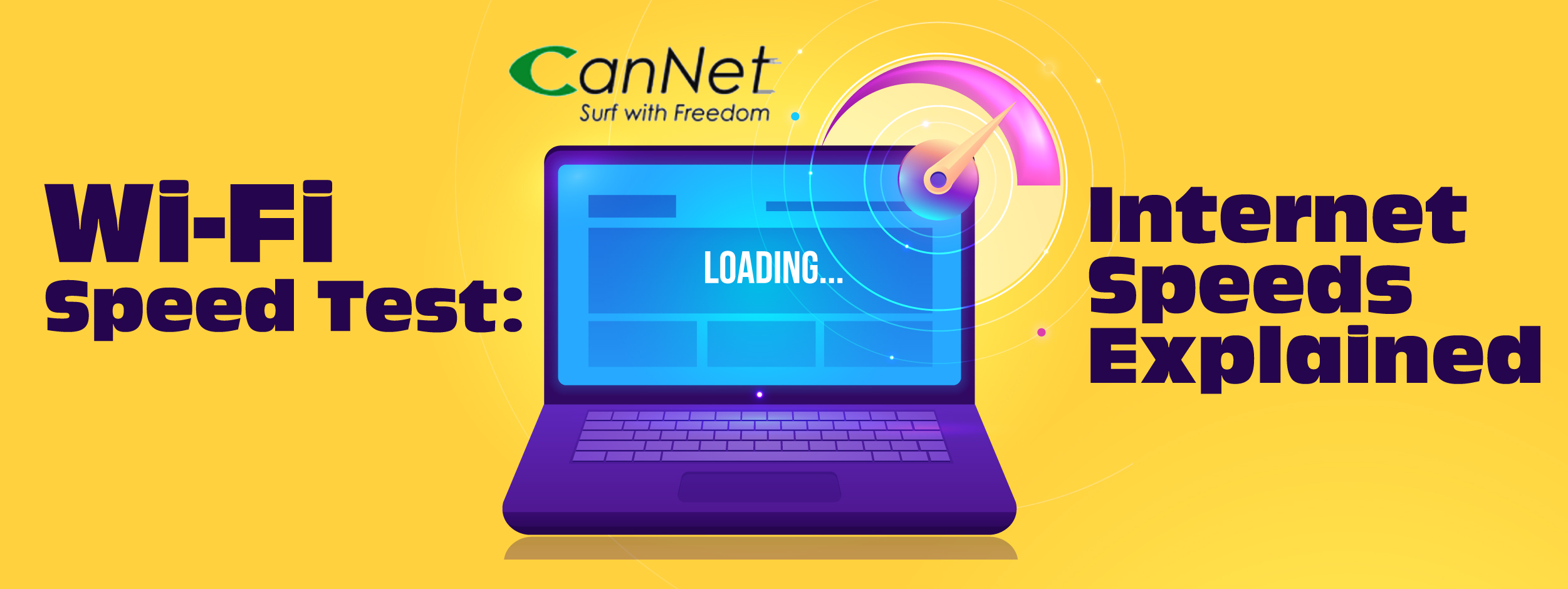Wi-Fi Speed Test: Internet Speeds Explained
So, you’ve taken a speed test to find out what speeds you’re getting in your home. But with tricky terminology and a handful of numbers, what does it all mean? Here, we’ll break it all down so that you can get a better understanding of what internet speed is and how it affects your online experience.
What is internet speed?
Does internet speed confuse you? Do you scratch your head when you hear the words megabits, bandwidth, or latency? Don’t worry, you’re not alone.
Internet speed, the number they give you 5 Mbps, for example, has nothing to do with how fast your internet works. It’s not like a car or motorcycle where you can measure how fast it goes in miles per hour. Instead, internet speed is your allocated bandwidth. Bandwidth is the amount of data that can be sent to you, usually measured in seconds. For example, 5 Mbps would mean that you can receive up to 5 megabits of data per second.
Speed test terminology: what does it all mean?
- Kbps: - Kilobits per second. This is used when talking about dialup 56k for example and low-speed DSL.
- Mbps or Mbps: - Megabits per second. Some people confuse this with megabytes. The difference between the two is how the “b” is written in the abbreviation; Mbps = megabits and MBps = megabytes. This is the most common unit of speed used.
- MBps: - Megabytes per second. Megabytes aren’t usually used in residential internet plans.
- Gbps: - Gigabits per second. Gigabits are hardly used for internet plans, and the costs make them impractical for families and small businesses.
When taking a speed test, the most typically seen measurement is the download speed of your home network. Download speeds measure the rate at which data is transferred from the internet to your device and how long it takes your device to load websites or download files, for example. Correspondingly, upload speeds measure the rate at which data is transferred from your device to the internet.
Is my internet speed good?
Many factors can contribute to slow internet speeds, like the distance you are from your router or the number of users connected to your network. While understanding whether your internet speed is fast or slow is important, it’s just as important to know just what speeds you need. The typical household with four to five people needs about 200 Mbps to support a full range of bandwidth-hogging activities.
How do I test my Wi-Fi speed at home?
Is your Wi-Fi slow or laggy? Are you having connectivity problems? Whether you’re looking to test your Wi-Fi speed to diagnose a problem or just to see if you have good download and upload speeds in general, there are several ways to go about it.
1. Testing your Wi-Fi speed with a web app
The easiest way to test your at-home Wi-Fi speed is through a free web app, usually provided by Internet Service Providers (ISP). On average, speed tests take anywhere from 30 seconds to a minute and transfer roughly 40 MB of data or more, so keep that in mind if you have a data-based usage plan through your ISP.
2. Testing your Wi-Fi speed with your phone
There are dozens of mobile apps available in the iOS and Android app stores. But which one is the right one for your needs? A good, broad-scope app is the Speed test by Ookla app, available for both iPhone and Android. Like their web-based app, their mobile app can log your speed tests and track both download and upload speeds.

